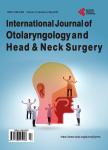Establishing a Cochlear Implant Program in a Rural Area of Germany with Special Respect to Older Patients
Establishing a Cochlear Implant Program in a Rural Area of Germany with Special Respect to Older Patients作者机构:Department of Otorhinolaryngology Head Neck & Plastic Facial Surgery Klinikum Bad Hersfeld GmbH Bad Hersfeld Germany
出 版 物:《International Journal of Otolaryngology and Head & Neck Surgery》 (耳鼻喉(英文))
年 卷 期:2018年第7卷第2期
页 面:35-42页
学科分类:1002[医学-临床医学] 100214[医学-肿瘤学] 10[医学]
主 题:Cochlear Implantation Rural Area Older Patients
摘 要:Objective: The present study aimed to demonstrate the patient outcomes after cochlear implantation in a rural area of Germany with special respect to older patients. Study Design: Retrospective Study. Setting: ENT-Department of Bad Hersfeld as an academic teaching hospital of the Justus-Liebig-University of Giessen. This is located in a rural county in Germany. Patients: A consecutive series of 217 patients implanted between 2003 and 2017. Intervention: Patients were implanted with different cochlear implant devices by the same surgeon in a standard procedure. In cases of chronic otitis media a middle ear obliteration was performed 6 months prior to cochlear implantation. Main Outcome Measures: Patients were divided in two groups: group 1 was 18 to 65 years of age and group 2 was older than 65 years. Pre- and postoperative hearing and speech understanding evaluated by the Freiburg monosyllable word test and the HSM-sentence test in the group of patients. Results: The mean preoperative speech understanding of group 1 was 0.5% for monosyllables at 60 dB and 2.7% at 80 dB. Group 2 showed similar results with 0.2% and 1.2%. In the HSM-test, group 1 had a speech understanding of 2.6% and group 2 of 3.2%. No statistically significant difference could be found between both groups. After cochlear implantation mean speech understanding at 60 dB increased in group 1 to 53.2% and 65.1% at 80 dB respectively. Group 2 had an improvement to 51.8% at 60 dB and 68.3% and 80 dB. The results in the HSM-sentence test were 77.8% in group 1 and 83.7% in group 2 (p = 0.47). Both groups had a significant increase in speech understanding concerning both tests after cochlear implantation (p = 0.0001) whereas we could not confirm any significant difference between the younger and older CI-recipients in the monosyllable word test. During the observation period no major complications had to be observed. Conclusion: Our data suggest that cochlear implantation in a rural area of Germany is feasi



